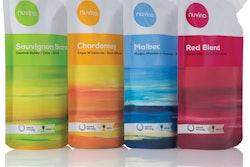
You had lab testing done and today the lab confirmed that result. What are the first things you think of? Is it FDA’s power to order food recalls, suspend your facility registration, or administratively detain your products? No—it is, or should be, the quickest ways to remedy the situation (Recall? Changed procedures? Cleaning and sanitizing?) plus your legal obligation to report to FDA within 24 hours your determination that the food might be a danger to health.
That report is called for when a food company discovers a food in interstate commerce is “reportable,” that is, that there is a “reasonable probability that the use of, or exposure to” it “will cause serious adverse health consequences or death to humans or animals.” The report has to be made by the “responsible party” within 24 hours after determining the food is “reportable.” Reports are made through a dedicated online portal. (Dietary supplements and infant formulas are not included in the RFR obligation, but have their own separate reporting obligations. USDA-regulated meat and poultry are not included, either.)
As readers of this column know, I have long advanced the position that the RFR places a crucial burden on the food industry, even though, since 2011, newer FDA powers that arrived with the Food Safety Modernization Act—like the power to recall, suspend registrations, or detain food—have gotten most of the attention.
FDA recently published its fourth annual report on the RFR’s operation. The story this year also comes with news of FDA action to tweak the RFR program with changes designed to increase publicity about RFR reports.
In Year 4 of the RFR, there were 1,269 total entries, up from 1,095 the prior year. Biggies included a peanut butter salmonella issue that led to over 200 separate reports, about 80 relating to concerns about Listeria monocytogenes in imported smoked salmon, and about 70 relating to E. coli concerns relating to frozen foods. Some of these reports were related to investigations of human illness outbreaks.
There was an increase in Year 4 in reports of undeclared allergens—88 compared with 85 the year before—and that kind of problem continues to represent a big part of the total reports. It was 44% of the Year 4 total. Reports about raw agricultural products were down to 10 from 33, as were fresh cut produce, 13 down from 23.
In terms of the hazards inspiring the RFR reports, undeclared allergens on labels led to 44%, Salmonella contamination concerns led to 29%, Listeria monocytogenes 17%, and 3% or less for each of these: nutrient imbalance; uneviscerated fish; drug contamination; pathogenic E. coli; foreign objects; undeclared sulfites; and ‘other.’
Animal food and feed are covered by the RFR obligation, and are a big part of the picture. Reports about animal food and feed were up, as there were 30 in Year 4, up from 19 in Year 3. FDA also notes that animal food or feed were the “most frequently reported commodity in Year 4,” as well as the majority of Salmonella-related reports.
Ironically perhaps, it was the FSMA itself that called for FDA to change the RFR program, specifically to require companies to submit to FDA consumer-oriented details about reportable foods; requiring FDA to summarize key information into a one-page summary suitable for posting in grocery stores and online; requiring chain groceries to prominently display the relevant information (applies to chains of 15 physical locations or more); and requiring FDA to make a list of “acceptable conspicuous locations and manners” of getting that information to consumers.
There are at least 2 different ways that Congress can instruct a regulatory agency such as FDA to do things. It can either write into the law some general concepts and principles and leave it to the agency to figure out how to translate them into action when the agency makes regulations, or it can include in the law very detailed specifications about what the regulations should require. (Congress’s addition of the food labeling requirements in 1990 with the Nutrition Labeling and Education Act was an example of the second approach – Congress built into the law an unusually large number of details about what nutrition information should be included on food labels.)
The FSMA changes to the RFR fall somewhere in the middle. They provide some pretty specific details about the kinds of communications they want to see grocers provide, but leave many of the details to FDA to work out.
In turn, to work them out, FDA issued in June something called an Advance Notice of Proposed Rulemaking on these subjects. Whereas most regulation-making processes begin with publication of a proposed rule, sometimes an agency steps backwards from that and instead asks for public input on how best to attack topics they plan to regulate. That’s what an ANPR is, a message that the agency knows it has to or wants to address an issue but needs input on how best to do it. An ANPR is the regulatory agency saying “Ummm, I need some help please.”
Once they collect this preliminary set of inputs, they’ll develop and publish proposed regulations on these topics, get comments on those proposals, then publish final regulations.
The RFR was already an important and urgent obligation on food packagers, and I have argued that its existence made it unnecessary for FDA to have the power to order food recalls. After all, how many companies would neglect to recall their foods if they had just reported to FDA that the food was a possible danger to health? These new tweaks to the system will only make RFR reports louder and more prominent events, because the tweaks are designed to make it more certain that consumers receive the news.
Eric Greenberg can be reached at [email protected], and visit his firm’s Web site at www.ericfgreenbergpc.com.


























